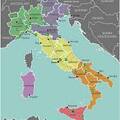Pécs is in the southern part of Hungary. It is the fifth largest city in Hungary. It is the seat of Baranya County. The population is about 150,000 people.
History: The Romans created the Province of Pannonia in the first century. Its centre was Sopianae.

Pécs was built on the ruins of that town. Hungarians occupied this land in the 9th century. Later on Pécs became a religious centre. King Stephen established an episcopate here.
Louis the Great founded the first university in 1367. So it became a cultural centre as well. Over 150 years the town ruled by the Turks.
Turkish monuments are Gazi Kassim Pascha Mosque, Jakovali Hassan Mosque, Memi pasha’s bath.
Pécs lies at the foot of the Mecsek hills. It has a mild, Mediterranean climate.
The centre of the city is Széchenyi Square. Király, Ferencesek and Irgalmasok Streets start here. They are the main walking and shopping areas of Pécs.
One of the symbols of Pécs stands in the upper part of Széchenyi Square. It is the Mosque of Gazi Kasim Pascha. They built it during the Turkish rule but today it serves as a Christian church. Trinity statue, Hunyadi memorial, the City Hall with its clock tower also stand here.
We can find parts of the city wall from the 14th century in Citrom Street and behind the Cathedral. The four towered Cathedral stands in the northern part of Dóm Square. It is the other symbol of Pécs. In the Barbican Garden there is the Statue of Janus Pannonius.
Pécs is also a university town. Students from all over the world study here, too.
Famous museums can be found in Pécs: Zsolnay exhibition, Vasarely Museum, Csontváry Museum, Cella Septichora Visitor Centre and Zsolnay Cultural Quarter.
You can entertain yourself at the National Theatre, cinemas and Kodály Center. There is a zoo and an extreme park in Mecsek Hills. On top of the Mecsek Hill there is the TV Tower. It is about 197m high.
Pécs is also famous for its tobacco industry and the Zsolnay factory. There are big supermarkets and shopping centres where you can do your shopping.

